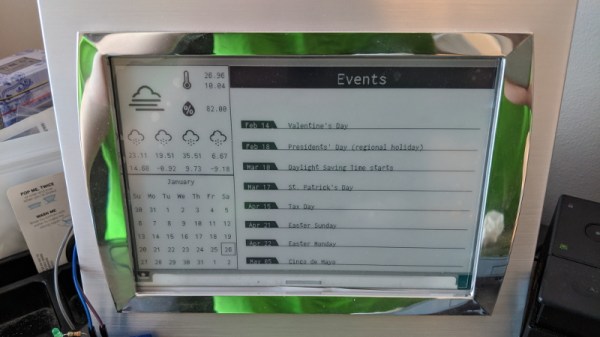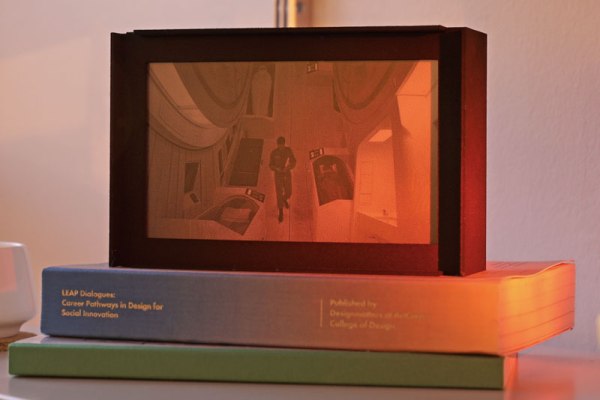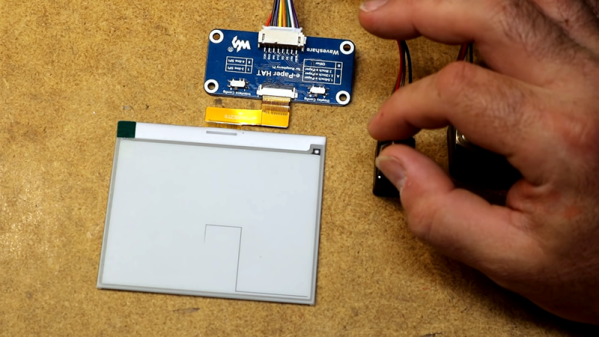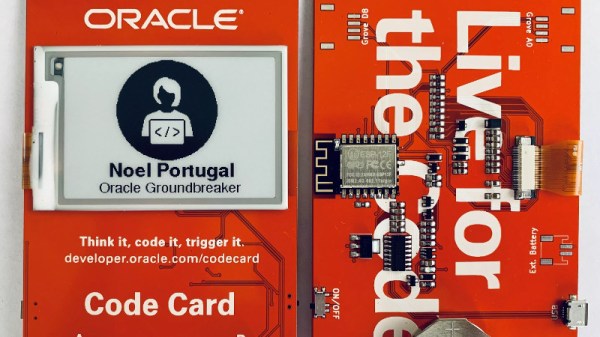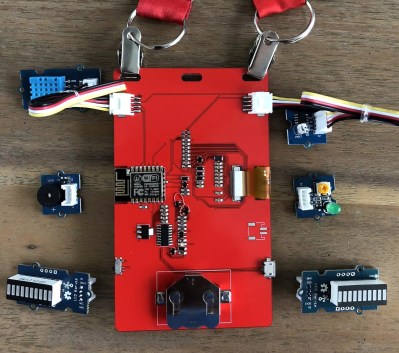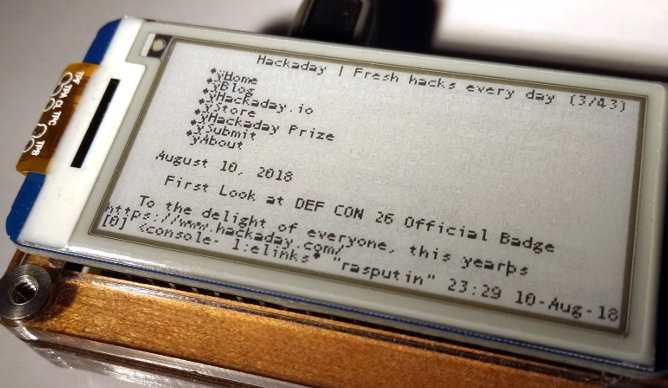Like many hackers, we love e-ink. There’s something mesmerizing and decidedly futuristic about the way the images shift around and reconstitute themselves. Like something from Harry Potter, but that you can buy on Alibaba instead of from a shop in Diagon Alley. But as anyone who’s used the technology can tell you, the low refresh rate of an e-ink screen limits its potential applications. It works great for reading books, but beyond that its struggled to find its niche in a world of cheap LCDs.
But [Zonglin Li] has recently wrapped up a project which shows that e-ink has at least one more use case: personal calendars. You can get way with only updating the screen once a day so the refresh rate won’t matter, and the rest of the time it’s going to be static anyway so you might as well enjoy the energy savings of leaving the screen off. With a Raspberry Pi behind the scenes pulling data from the Internet, it can populate the calendar with everything from your personal schedule to when your favorite podcast drops.
In practice, [Zonglin] is actually updating the display every hour as he’s included the current weather conditions on the top left of the screen, but even still, this is a perfect application for the very unique properties of e-ink displays. The display is a 7.5 inch 640×384 model from Waveshare that retails for about $50 USD, so between the display, the Raspberry Pi, and something to put it all in (here, a picture frame) this is a pretty cheap build compared to some of the large format e-ink displays out there.
The software side is written in Python 3, and [Zonglin] has documented how others can easily plug in their own information so it can pull schedule data from Google Calendar and local conditions from Open Weather Map. The MIT licensed source code is also very well organized and commented, so this could serve as an excellent base if you’re looking to create a more comprehensive e-ink home information display.
If this seems a little too pedestrian for your tastes, you could always put together an e-ink movie player, a surprisingly functional Linux terminal, or a very slick ESP8266-based name tag. If you’ve got the better part of $1K USD and don’t know what to do with it, you could even get an e-ink license plate.

